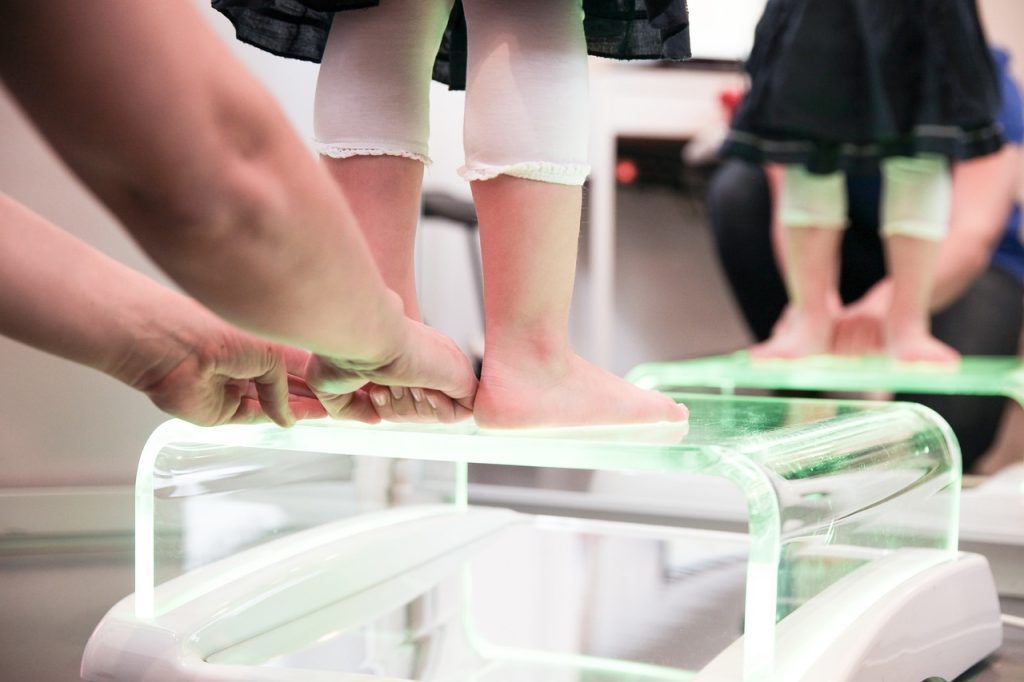You may not realize it, but the arch support in your running sneakers plays a crucial role in your overall comfort and performance. Whether you’re a casual jogger or a seasoned marathon runner, having proper arch support in your shoes can make a world of difference. Not only does it provide stability and balance, but it also helps prevent common foot problems such as plantar fasciitis and flat feet. In this article, we will explore the significance of arch support and why it should not be overlooked when choosing the right pair of running sneakers for your feet.

What is Arch Support?
Definition of arch support
Arch support refers to a feature in footwear, such as running sneakers, that provides extra support to the arch of the foot. The arch is the curved part of the foot that spans the area between the heel and the ball of the foot. Arch support is designed to help maintain the natural shape of the arch and provide additional stability and cushioning to the foot during physical activities like running.
Function of arch support
The main function of arch support is to help distribute the weight and pressure evenly across the foot. This helps to alleviate strain on the arch and reduces the risk of injury. Arch support also helps to correct biomechanical imbalances in the foot, such as overpronation or supination, which can lead to discomfort and potential injury. By providing support to the arch, running sneakers with arch support enhance overall foot mechanics and improve running performance.
The Importance of Arch Support in Running Sneakers
When it comes to running sneakers, arch support plays a crucial role in ensuring optimal comfort and performance. Here are several key reasons why arch support is important for runners:
Prevents overpronation
Overpronation, which refers to the excessive inward rolling of the foot during the running gait, can lead to various issues such as plantar fasciitis and shin splints. Arch support helps to prevent overpronation by providing stability to the foot and reducing excessive movement.
Improves stability and balance
Having proper arch support in running sneakers helps to improve stability and balance. It helps to distribute the weight evenly and provides a solid foundation for the foot, reducing the risk of tripping or losing balance while running.
Reduces foot fatigue
Without adequate arch support, the muscles and ligaments in the foot can become overworked and fatigued. Arch support helps to alleviate this fatigue by providing the necessary support and cushioning, allowing runners to go the distance without discomfort.
Enhances shock absorption
Running puts a significant amount of stress on the feet, especially during high-impact activities. Arch support aids in shock absorption by absorbing the impact forces and reducing the stress on the arch and other structures of the foot. This helps to prevent injuries and discomfort during and after running.
Prevents injuries
By promoting proper foot alignment and reducing excessive motion, arch support helps to minimize the risk of various running injuries such as plantar fasciitis, Achilles tendonitis, and stress fractures. It provides the necessary support to keep the foot in a biomechanically efficient position, reducing the strain on the muscles, ligaments, and tendons.
Common Arch Problems in Runners
Understanding the arch type and any existing arch problems is important when choosing the right arch support for running sneakers. Here are three common arch problems that runners may experience:
Flat feet
Flat feet, also known as fallen arches, is a condition where the arch of the foot is low or nonexistent. This can lead to overpronation and an increased risk of developing foot pain and injuries. Runners with flat feet require arch support that provides stability and helps to correct the alignment of the foot during running.
High arches
High arches, on the other hand, refer to an arch that is excessively raised. Runners with high arches are prone to supination, where the foot rolls outward during the running gait. Arch support for runners with high arches should focus on cushioning and shock absorption, while still providing the necessary stability and support.
Plantar fasciitis
Plantar fasciitis, which involves the inflammation of the plantar fascia, a thick band of tissue that supports the arch, is a common condition among runners. Arch support plays a critical role in managing plantar fasciitis by providing stability and reducing the strain on the plantar fascia.
Different Types of Arch Support
There are several types of arch support available for running sneakers, each catering to different foot types and needs. Let’s take a closer look at these types:
Custom orthotics
Custom orthotics are custom-made arch supports that are specifically designed for an individual’s foot. They are typically created through a detailed analysis of the individual’s foot structure, and provide the highest level of personalized support and comfort.
Rigid arch support
Rigid arch supports are usually made of hard materials such as plastic or fiberglass. They offer maximum support and stability to the arch, making them suitable for runners with flat feet or severe overpronation.
Semi-rigid arch support
Semi-rigid arch supports strike a balance between flexibility and support. They provide moderate support, allowing for some natural foot movement while still offering stability. These arch supports are suitable for runners with moderate pronation or supination.
Cushioned arch support
Cushioned arch supports are usually made from softer materials like foam or gel. They provide cushioning and shock absorption, making them ideal for runners with high arches or those who require additional comfort.

Choosing the Right Arch Support for Your Running Sneakers
With the variety of arch support options available, it’s important to choose the right one for your specific needs. Consider the following factors when selecting arch support for your running sneakers:
Understand your arch type
Determine whether you have flat feet, high arches, or a neutral arch. This can be done by conducting a simple wet foot test or consulting with a podiatrist or footwear expert. Understanding your arch type will help you choose the appropriate level of support and cushioning needed for your running sneakers.
Consider your running style
Evaluate your running gait and analyze any abnormal movements or imbalances. This can help determine whether you overpronate, supinate, or have a neutral foot strike. Select arch support that addresses your specific running style and corrects any biomechanical issues.
Consult a podiatrist or footwear expert
If you’re unsure about the best arch support for your running sneakers, it’s always a good idea to seek professional advice. Consult a podiatrist or a knowledgeable footwear expert who can assess your feet and provide personalized recommendations based on your specific needs and running goals.
The Impact of Arch Support on Running Performance
Proper arch support can have a significant impact on your running performance. Here are some benefits of wearing running sneakers with arch support:
Improved running form
Arch support helps to promote proper foot alignment during the running gait, which contributes to better overall running form. With proper support, you’ll experience better stability, reduced excessive motion, and a more efficient stride.
Increased comfort and endurance
Arch support provides the necessary cushioning and support to help reduce discomfort and fatigue during runs. This allows runners to go the extra mile with less stress on their feet, improving overall comfort and endurance.
Enhanced gait efficiency
By promoting a more natural and efficient foot movement, arch support helps to improve gait efficiency. This means runners can maximize their energy output and achieve better running performance while minimizing the risk of unnecessary strain or injuries.

How to Test Arch Support in Running Sneakers
Before committing to a pair of running sneakers with arch support, it’s important to test the level of support they provide. Here are a couple of methods to try out:
Feeling for arch support
When trying on running sneakers, pay attention to how the arch area feels against your foot. You should feel a gentle upward support that cradles your arch without feeling too tight or uncomfortable. If the arch support feels insufficient or uncomfortable, consider trying a different pair.
Walking and running test
Take a short walk or jog in the running sneakers to test the arch support while in motion. Pay close attention to any discomfort or pain in the arch area. If you experience any discomfort or if the arch support feels inadequate during movement, it may be necessary to explore alternative options.
Maintaining Arch Support in Running Sneakers
To ensure the longevity and effectiveness of arch support in running sneakers, it’s important to properly maintain them. Here are some tips:
Proper shoe fit
Make sure your running sneakers fit properly. The right shoe size and a snug fit will help optimize the performance of the arch support. Avoid wearing shoes that are too tight or too loose, as this can compromise the support provided by the arch.
Replacing worn-out insoles
Over time, the arch support in your running sneakers may wear out or lose its effectiveness. It’s recommended to replace the insoles regularly, especially if you notice a decrease in comfort or support. This will help maintain the optimal level of arch support, ensuring continued foot health and comfort.
Regular cleaning and maintenance
Keep your running sneakers clean and dry to prevent any damage or deterioration of the arch support. Follow the manufacturer’s guidelines for cleaning and maintenance to prolong the lifespan of your shoes and preserve the integrity of the arch support.
The Connection Between Arch Support and Overall Foot Health
Arch support is not only important for running performance but also for overall foot health. Here’s how arch support helps to promote foot health:
Prevention of foot conditions
Proper arch support helps to prevent various foot conditions, including plantar fasciitis, Achilles tendonitis, and shin splints, by promoting proper foot alignment and reducing excessive strain on the foot structures. It provides the necessary support to keep the foot in a biomechanically efficient position, preventing the development of painful foot conditions.
Alleviation of pain
Arch support can help alleviate foot pain caused by conditions such as plantar fasciitis or flat feet. By providing support and cushioning to the arch, it relieves stress on the foot structures and reduces discomfort, allowing for improved foot function and pain relief.
Improvement of posture
Proper alignment and support of the arch contribute to better overall posture. Arch support helps to maintain the natural curvature of the spine and the alignment of the lower body. Improved posture not only benefits foot health but also reduces the risk of developing other musculoskeletal issues.
Conclusion
Arch support is of utmost importance when it comes to running sneakers. By providing stability, balance, and cushioning, arch support enhances running performance, reduces the risk of injuries, and promotes overall foot health. Understanding your arch type, considering your running style, and seeking professional advice when needed can help you choose the right arch support for your running sneakers. Remember to test the level of arch support, maintain your running sneakers properly, and enjoy the benefits of investing in proper arch support – improved running form, increased comfort and endurance, and an enhanced overall running experience. So lace up your sneakers, hit the pavement, and let arch support guide your stride towards a more enjoyable and injury-free running journey.


